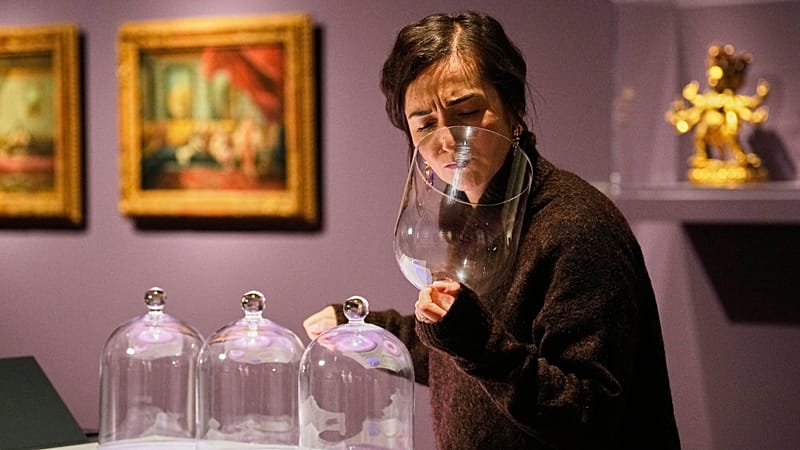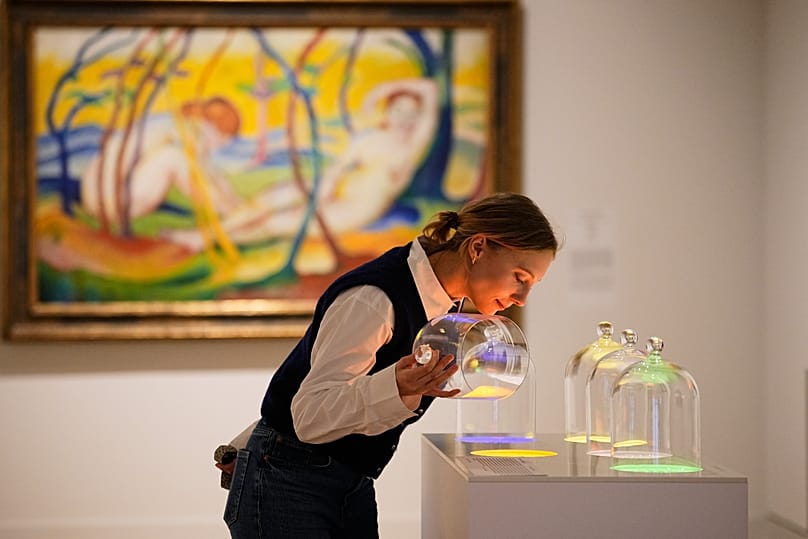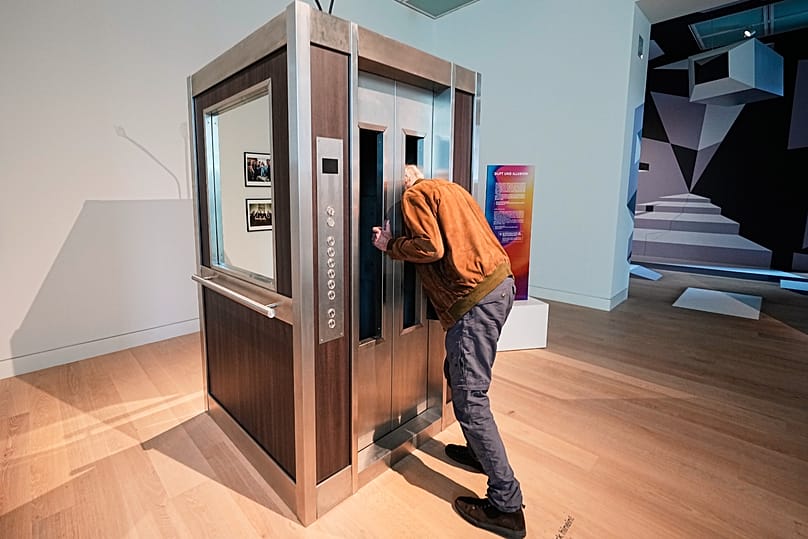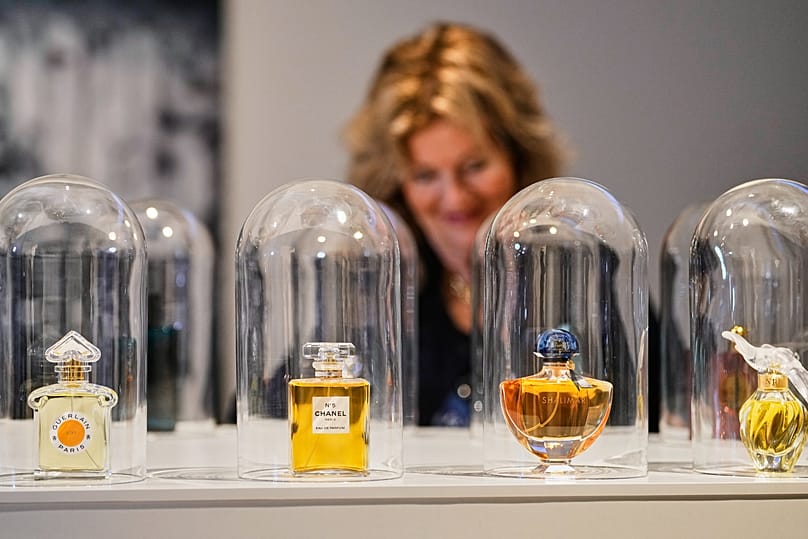What do war, feminism and love smell like? This German exhibition 'nose' the answer

Paintings hang lifelessly in the long corridors of museums we visited on school trips.
Marble sculptures stand forever frozen in action.
The way we interact with and experience art seems disproportionately focused on the senses we rely on most to make sense of reality - our sight and hearing.
But beyond the world of sight and sound, there is untapped potential to experience art in novel ways - through our other senses.
The Kunstpalast museum in Düsseldorf is seeking to harness one of them: our sense of smell.
The exhibition, titled The Secret Power of Scents, takes visitors on a journey spanning a millennium of smells - a thousand-year voyage across cultural history and the fragrances that accompanied it.
"I looked at the eras, the centuries, but also individual objects and exhibits, and examined what role scents played in the respective times, what might have just been newly developed, what was invented, what played a societal role,” says Robert Müller-Grünow, the exhibition’s curator and an expert on scent and scent technology.
There is a directness to smell that can make for a more vivid and engaging experience of art.
"Scents are purely emotional, the only sensory stimulus that cannot be rationally filtered,” explains Müller-Grünow. “It goes directly to the limbic system. It is always immediate in such a way that it creates emotions."
War, religion, love and feminism
Scents of incense and myrrh fill the air in a room adorned with religious carvings, composing a scene that transports us directly to ancient chapels and sacraments.
Those drawn to the simplicity of our ancestors’ daily lives can romanticise the peasant experience amidst a recreation of the smells one could expect on a street in medieval Paris – sewage, mould and unwashed bodies.
Visitors might physically recoil or retreat in fear when their nostrils are assaulted by scents from a World War I frontline – a mixture of blood, gunpowder and sulphur.
There’s even something for the more sensual visitors, curious about the potency of Early Medieval aphrodisiacs. What better way to find out than by smelling the scents of roses and a civet’s anal glands for yourself.
But there are also smells that reassure, that comfort, that bring us back or tell an important story. Smells of infinity, of important perfumes, scents that celebrate early feminism.
Müller-Grünow, the curator, wants the exhibition to shed light on the significance of scents in religion, politics, art, consumerism, and science – all combining into a holistic artistic experience.
The exhibition has now opened its doors to visitors, featuring over 81 distinct fragrances across 37 galleries.
So go have a whiff if you can.
The Secret Power of Scents runs at Düsseldorf’s Kunstpalast Museum until 8 March 2026.




